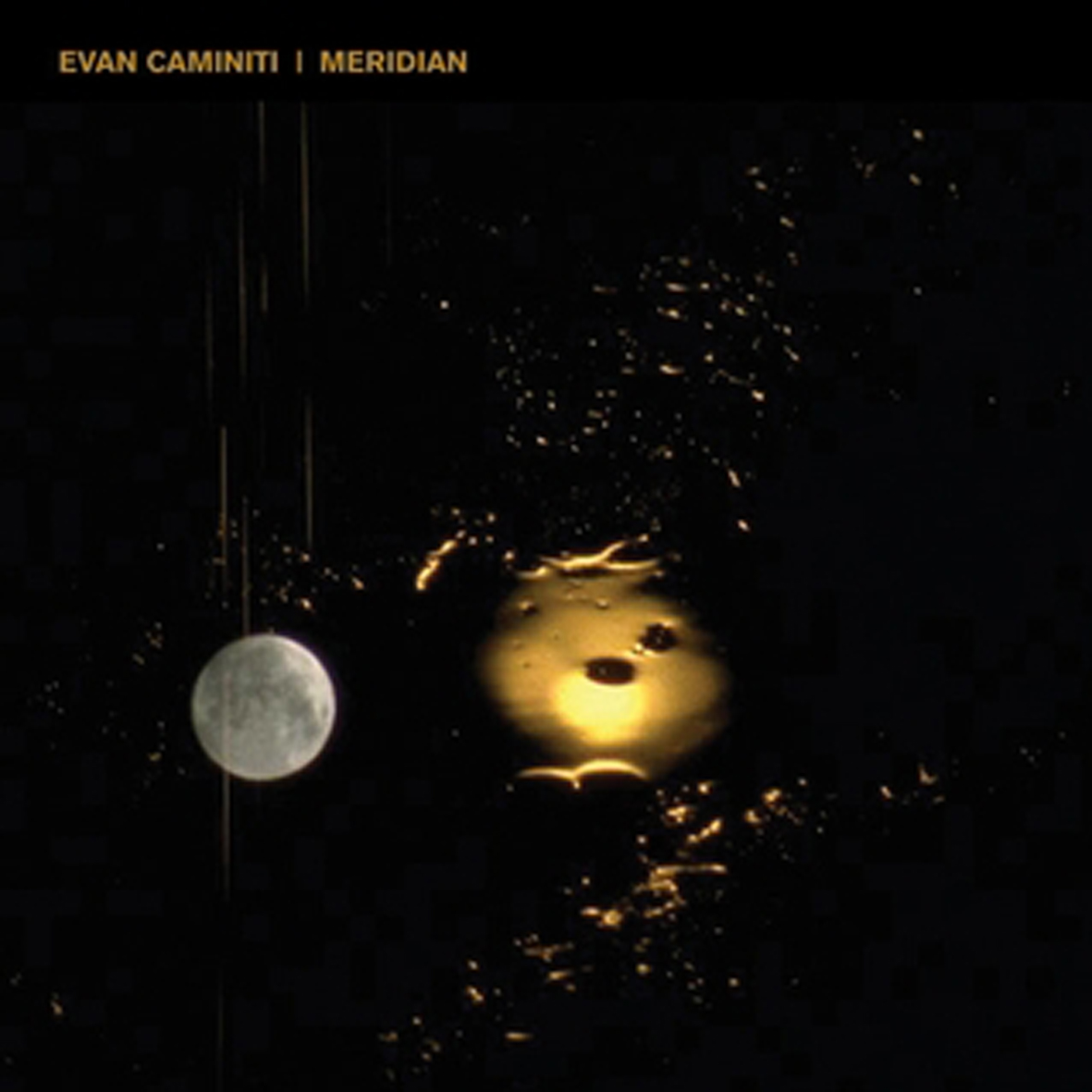 As much as I have enjoyed both Barn Owl and Evan Caminiti’s solo work in the past, his career has certainly been an unusual and chameleonic one, generally alternating between heady drone and his own particular strain of desert rock.  In theory, that history of creative restlessness should have prepared me for Meridian, but I truly did not see this monster of a synthesizer album coming.  The surprise is not that Caminiti’s guitar is nowhere to be heard or even that he made an entirely electronic album–it is that his first foray in this direction is such a mesmerizing tour de force that effortlessly transcends the rest of the synthesizer pack (and most of Evan's own previous discography).
As much as I have enjoyed both Barn Owl and Evan Caminiti’s solo work in the past, his career has certainly been an unusual and chameleonic one, generally alternating between heady drone and his own particular strain of desert rock.  In theory, that history of creative restlessness should have prepared me for Meridian, but I truly did not see this monster of a synthesizer album coming.  The surprise is not that Caminiti’s guitar is nowhere to be heard or even that he made an entirely electronic album–it is that his first foray in this direction is such a mesmerizing tour de force that effortlessly transcends the rest of the synthesizer pack (and most of Evan's own previous discography).
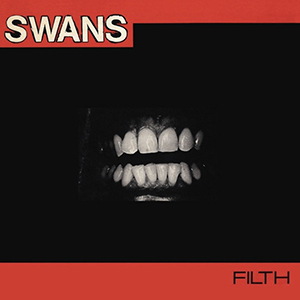 Even with their reappearance in the past five years, the earliest days of Swans are the ones that are often cited as the most important and essential. It almost is a perfect example of the hipster cliché of "Oh I only like their EARLY material (or pre-Jarboe)". The fact is that Swans were amazing from their inception to today, and whatever stylistic shifts they made were brilliant, if sometimes drastic and unexpected. Amidst their always-expanding touring and recording schedules, Michael Gira has initiated a reissue campaign, beginning with an expanded version of their debut, Filth. A template for most heavy music that has followed, the originator is still peerless, and could be released today and be just as deserving of the accolades and admiration it has received since 1983.
Even with their reappearance in the past five years, the earliest days of Swans are the ones that are often cited as the most important and essential. It almost is a perfect example of the hipster cliché of "Oh I only like their EARLY material (or pre-Jarboe)". The fact is that Swans were amazing from their inception to today, and whatever stylistic shifts they made were brilliant, if sometimes drastic and unexpected. Amidst their always-expanding touring and recording schedules, Michael Gira has initiated a reissue campaign, beginning with an expanded version of their debut, Filth. A template for most heavy music that has followed, the originator is still peerless, and could be released today and be just as deserving of the accolades and admiration it has received since 1983.
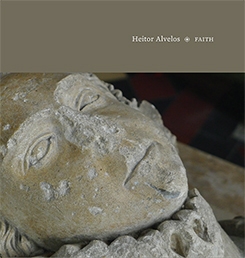 Heitor Alvelos is no stranger to the Touch label, having collaborated as a visual artist with the big names of the label such as Fennesz, BJ Nilsen, and Philip Jeck, as well as issuing sound work under a variety of pseudonyms on the associated labels. Faith is a collection of processed sound recordings and "audio irregularities", and due to their more personal and autobiographical source, it is the first record released under his own name. Essentially a single composition split into 12 segments, it is a sparse and murky record, steeped heavily in an analog sound.
Heitor Alvelos is no stranger to the Touch label, having collaborated as a visual artist with the big names of the label such as Fennesz, BJ Nilsen, and Philip Jeck, as well as issuing sound work under a variety of pseudonyms on the associated labels. Faith is a collection of processed sound recordings and "audio irregularities", and due to their more personal and autobiographical source, it is the first record released under his own name. Essentially a single composition split into 12 segments, it is a sparse and murky record, steeped heavily in an analog sound.
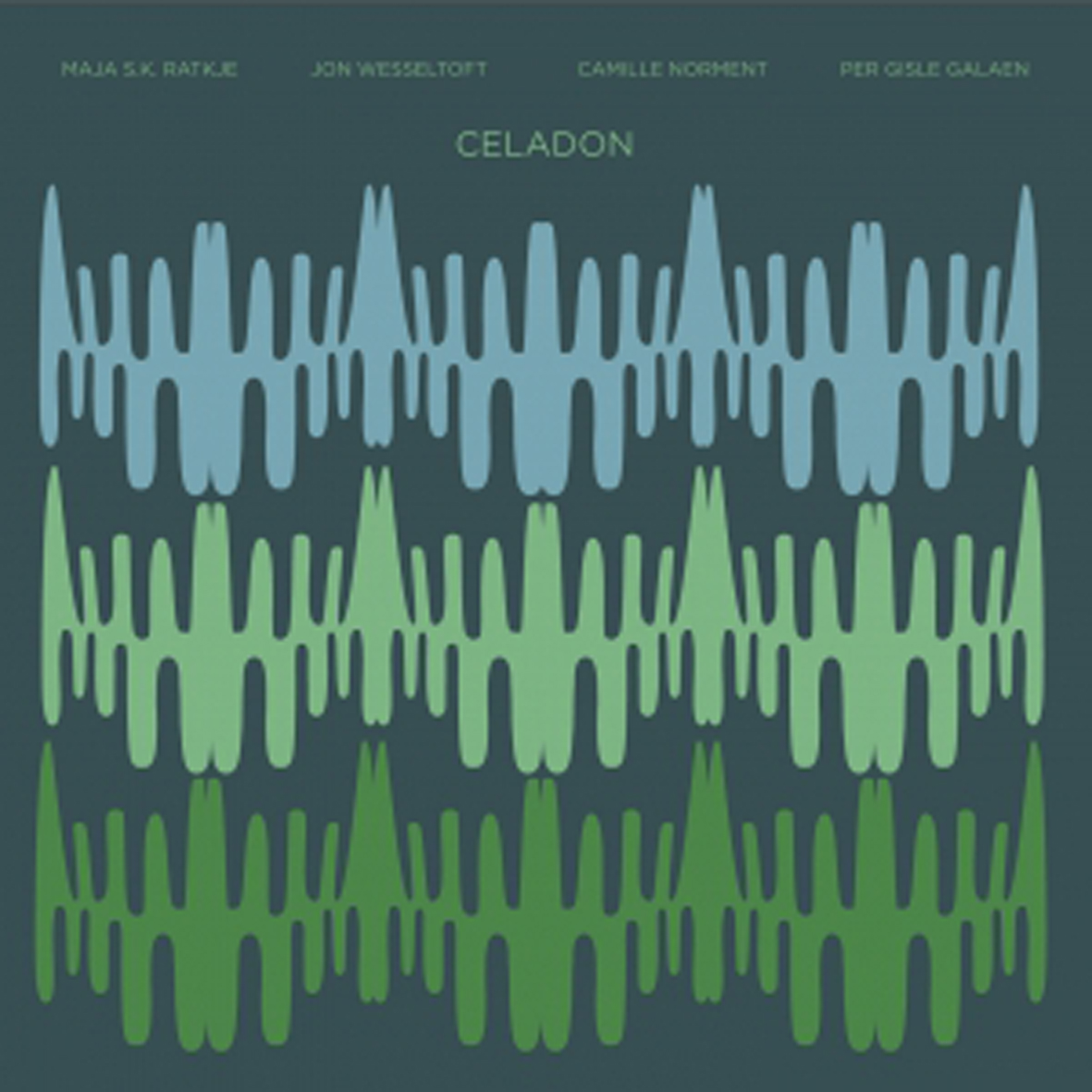 I am not particularly familiar with any of the four artists involved in this unexpectedly audacious and unique album, but Celadon is definitely a kindred spirit to Important's previous iconoclastic, raga-influenced drone epics by Catherine Christer Hennix.  Charlemagne Palestine is yet another artist that unavoidably springs to mind, but favorably so: while this album is anything but derivative, Maja Ratkje and her collaborators share his willingness to take drone music into some very dissonant, uncategorizable, and cathartic territory.  Put more bluntly: Celadon is probably not for the average drone fan, as Ratkje's vocals gradually build to an almost demonic, window-rattling intensity, but it is nevertheless a bold, striking, and deceptively ferocious artistic statement that is like absolutely nothing else that I have heard.
I am not particularly familiar with any of the four artists involved in this unexpectedly audacious and unique album, but Celadon is definitely a kindred spirit to Important's previous iconoclastic, raga-influenced drone epics by Catherine Christer Hennix.  Charlemagne Palestine is yet another artist that unavoidably springs to mind, but favorably so: while this album is anything but derivative, Maja Ratkje and her collaborators share his willingness to take drone music into some very dissonant, uncategorizable, and cathartic territory.  Put more bluntly: Celadon is probably not for the average drone fan, as Ratkje's vocals gradually build to an almost demonic, window-rattling intensity, but it is nevertheless a bold, striking, and deceptively ferocious artistic statement that is like absolutely nothing else that I have heard.
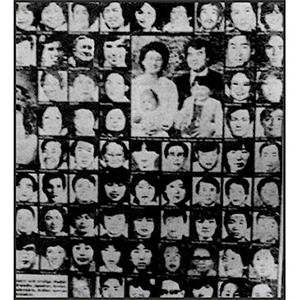 The New Crimes is a dense, imposing boxed set in the way that legendary noise collections such as Ramleh's Awake and Sutcliffe Jugend's We Spit on Their Graves are. Previously released in 1995 in an edition of 10, this material obviously did not receive significant exposure. Murder Corporation might not be amongst the most well known of Italian noise artists, which is a shame given the diversity contained on these eight discs. However, the brown and murky, analog heavy lo-fi sound is one that can at times be impenetrable and oppressive. Though daunting, the varying approaches Moreno Daldosso uses in composition result in a diverse, yet still bleak and violent piece of art.
The New Crimes is a dense, imposing boxed set in the way that legendary noise collections such as Ramleh's Awake and Sutcliffe Jugend's We Spit on Their Graves are. Previously released in 1995 in an edition of 10, this material obviously did not receive significant exposure. Murder Corporation might not be amongst the most well known of Italian noise artists, which is a shame given the diversity contained on these eight discs. However, the brown and murky, analog heavy lo-fi sound is one that can at times be impenetrable and oppressive. Though daunting, the varying approaches Moreno Daldosso uses in composition result in a diverse, yet still bleak and violent piece of art.
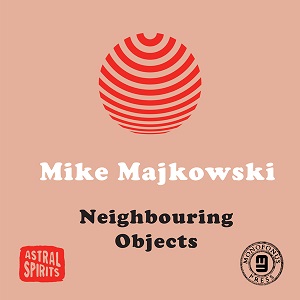 Turn off the mechanical, logic-soaked part of your brain and sympathetic resonance sounds like a magic trick, and looks like one too. It’s the phenomenon that explains why opera singers can shatter glass from across the room with nothing but their voice. Whether bright or ominous, the spontaneous ring (or explosion) of an untouched body or an unplayed string is provocative. It is a sign of sound’s invisible inner life, the one that has nothing to do with intentions or compositions, the one that John Cage implied when he suggested that writing music was a means of "waking up to the very life we’re living, which is so excellent once one gets one’s mind and one’s desires out of its way and lets it act of its own accord." That is the sort of life Mike Majkowski is after on Neighbouring Objects, his latest cassette on Astral Spirits. The title suggests sympathetic resonance abstractly, but it also describes Majkowski’s instrumentation, which for the first time includes bass guitar, accordion, piano, and percussion alongside the core of his double bass. Magical though it may seem, Majkowski uses these tools to emphasize both the affective and the measurable, more physical properties of sound.
Turn off the mechanical, logic-soaked part of your brain and sympathetic resonance sounds like a magic trick, and looks like one too. It’s the phenomenon that explains why opera singers can shatter glass from across the room with nothing but their voice. Whether bright or ominous, the spontaneous ring (or explosion) of an untouched body or an unplayed string is provocative. It is a sign of sound’s invisible inner life, the one that has nothing to do with intentions or compositions, the one that John Cage implied when he suggested that writing music was a means of "waking up to the very life we’re living, which is so excellent once one gets one’s mind and one’s desires out of its way and lets it act of its own accord." That is the sort of life Mike Majkowski is after on Neighbouring Objects, his latest cassette on Astral Spirits. The title suggests sympathetic resonance abstractly, but it also describes Majkowski’s instrumentation, which for the first time includes bass guitar, accordion, piano, and percussion alongside the core of his double bass. Magical though it may seem, Majkowski uses these tools to emphasize both the affective and the measurable, more physical properties of sound.
 In a perfect world, an artist of Amara Touré’s caliber would need no introduction at all, but the real world is weird and mysterious enough to definitely warrant one in this case, so here it is: Touré’s innovative, sensuous, and sexy Cuban-influenced grooves basically ruled the nightlife in Cameroon and Senegal for roughly two decades, but he only recorded a handful of songs and then disappeared without a trace around 1980.  This collection compiles all of his known singles as well as his sole album and it is all great.  To my ears, this is a lock for the most crucial reissue of the year.
In a perfect world, an artist of Amara Touré’s caliber would need no introduction at all, but the real world is weird and mysterious enough to definitely warrant one in this case, so here it is: Touré’s innovative, sensuous, and sexy Cuban-influenced grooves basically ruled the nightlife in Cameroon and Senegal for roughly two decades, but he only recorded a handful of songs and then disappeared without a trace around 1980.  This collection compiles all of his known singles as well as his sole album and it is all great.  To my ears, this is a lock for the most crucial reissue of the year.
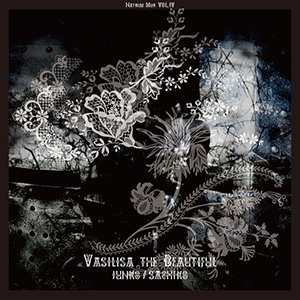 Initially I was not sure what to expect from this pairing. I know Sachiko's solo work can be a varying mix of beauty and ugly, and Junko via Hijokaidan, which is always intensely, yet brilliantly abrasive. On Vasilisa the Beautiful, harshness is the clear winner. Two vocal performances of raw throated dissonance over a bed of electronics, recorded live, makes for anything but an easy album to listen to.
Initially I was not sure what to expect from this pairing. I know Sachiko's solo work can be a varying mix of beauty and ugly, and Junko via Hijokaidan, which is always intensely, yet brilliantly abrasive. On Vasilisa the Beautiful, harshness is the clear winner. Two vocal performances of raw throated dissonance over a bed of electronics, recorded live, makes for anything but an easy album to listen to.
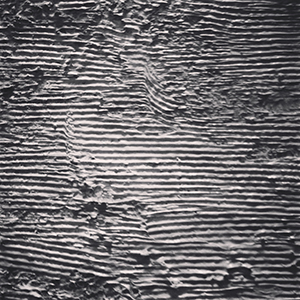 With these two near-simultaneous releases, Joao Da Silva's Luciernaga takes two different approaches to his not quite noise, not quite musical. To the Centre of the City in the Night is the more fleshed out release, with its five pieces running the gamut from bowed string drones to harsher electronics. Tile II, a follow up to the similarly titled release from last year is more immediate, which is fitting a super-limited tape and free digital release. They are two sides of the same coin, with both being enthralling in their own ways.
With these two near-simultaneous releases, Joao Da Silva's Luciernaga takes two different approaches to his not quite noise, not quite musical. To the Centre of the City in the Night is the more fleshed out release, with its five pieces running the gamut from bowed string drones to harsher electronics. Tile II, a follow up to the similarly titled release from last year is more immediate, which is fitting a super-limited tape and free digital release. They are two sides of the same coin, with both being enthralling in their own ways.
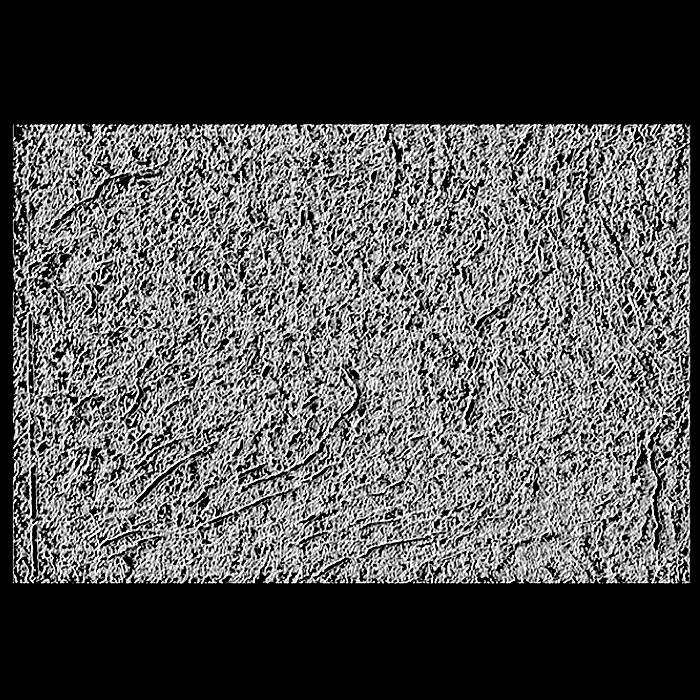 With only a handful of releases available, Granite Mask is quite an enigma. Little information about the project can be found online, and the artwork on their output is abstract to stay the least. The lack of information is fitting their murky, abstract sound, which does a brilliant job of mixing conventional electronic rhythms with dissonant, abstract blasts of noise.
With only a handful of releases available, Granite Mask is quite an enigma. Little information about the project can be found online, and the artwork on their output is abstract to stay the least. The lack of information is fitting their murky, abstract sound, which does a brilliant job of mixing conventional electronic rhythms with dissonant, abstract blasts of noise.



